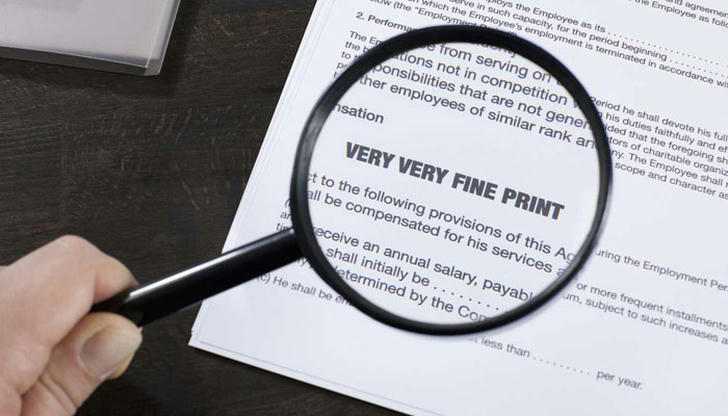Why Choosing the Cheapest Plan Could Cost You More in 2025

When it comes to health insurance, many of us automatically reach for the plan with the lowest monthly premium. It seems logical: pay less each month and save money, right? But in 2025, that approach could backfire in ways that are both expensive and frustrating. Health insurance isn’t just about monthly payments—it’s about coverage, hidden costs, and the fine print that often goes unnoticed until it’s too late. Here’s why the cheapest plan might actually end up costing you more.
1. Low Premiums Often Mean High Out-of-Pocket Costs

One of the most common traps with low-cost plans is the trade-off between premiums and out-of-pocket expenses. A plan may boast a $200 monthly premium, but if the deductible is $5,000, you’ll have to pay that full amount before your insurance truly kicks in. Add in copays for doctor visits, prescriptions, and emergency room trips, and suddenly that “affordable” plan looks much less appealing.
In contrast, plans with slightly higher premiums often have lower deductibles and more predictable costs. In the long run, spending a bit more each month can save you thousands if you need medical care. Think of it like buying a car—you can pay less upfront for a cheap model, but the maintenance and repair costs can quickly add up.
2. Limited Provider Networks Can Lead to Surprise Bills

Many of the cheapest health insurance plans limit which doctors and hospitals you can see. If your preferred doctor or local hospital isn’t in-network, you could face massive surprise bills. In 2025, insurance networks are constantly shifting, meaning a doctor who was covered last year might be out-of-network now.
This is especially important for chronic conditions. Imagine you rely on a specialist for regular care. Choosing a plan without checking if that specialist is included could force you to switch providers or pay exorbitant fees. When comparing plans, always double-check the provider network—not just the premium.
3. Prescription Drug Coverage Can Be Minimal

Prescription drugs are another hidden expense that cheap plans often skimp on. Some plans may only cover generic medications or limit the number of prescriptions you can claim per year. If you take brand-name medication or multiple prescriptions, your out-of-pocket costs can soar.
Even more frustrating: some “affordable” plans place certain drugs on a high-tier formulary, meaning you pay significantly more for the medications you need. In 2025, it’s crucial to review the plan’s drug coverage list before enrolling. Otherwise, your low monthly premium could be eaten up by your pharmacy bills.
4. Preventive Care Might Be Restricted
Preventive care—annual checkups, vaccines, screenings—is often fully covered by most insurance plans. However, cheaper plans sometimes limit these benefits or require high copays for certain services. Skipping preventive care might save money in the short term, but it can lead to serious health issues down the line, which are far more expensive to treat.
For example, a simple annual blood test could detect diabetes or high cholesterol early. If your plan doesn’t fully cover it, you might delay testing, leading to complications that require expensive treatment. In essence, trying to save money now could cost you much more later.
5. Limited Telehealth or Wellness Perks

2025 has seen a surge in telehealth and wellness-focused insurance benefits. Many plans now offer online doctor visits, mental health support, and fitness incentives. But the cheapest plans often skip these perks entirely. While it may not seem critical, these benefits can save money and improve quality of life.
Telehealth alone can reduce urgent care visits, travel expenses, and time off work. Mental health coverage can prevent costly hospitalizations or therapy gaps. In short, the cheapest plan might appear attractive until you realize it lacks modern conveniences that save both time and money.
6. Hidden Fees and Fine Print

Finally, the fine print is where cheap plans really show their teeth. Look out for clauses like:
Annual coverage caps: some plans limit how much they’ll pay per year.
High coinsurance: paying 30–40% of each bill even after the deductible is met.
Limited emergency coverage: especially if you travel frequently.
Reading the fine print can be tedious, but it’s essential. A plan that seems affordable could leave you paying thousands in unexpected fees.
How to Choose Smartly Instead of Cheaply
The key takeaway is that health insurance is an investment, not just a monthly payment. Here’s how to pick wisely in 2025:
Check deductibles and copays: Calculate how much you’d pay out-of-pocket in a realistic scenario.
Review provider networks: Ensure your doctors, hospitals, and specialists are covered.
Examine drug coverage: Make sure your prescriptions are included and affordable.
Look at preventive and wellness benefits: Don’t skip coverage that could save money in the long run.
Understand the fine print: Know annual limits, coinsurance rates, and emergency coverage.
The Bottom Line

Choosing the cheapest health insurance plan can feel like a win when you first see the low premium. But in 2025, that approach is increasingly risky. Hidden costs, limited coverage, and fine print traps can turn a “bargain” into a financial headache. Instead of focusing solely on monthly payments, look at the total cost, coverage quality, and benefits. Spending a little more upfront often saves money—and stress—later.
In the end, smart planning now can protect both your wallet and your health. Choosing wisely, not just cheaply, is the real key to getting the most out of your health insurance in 2025.
